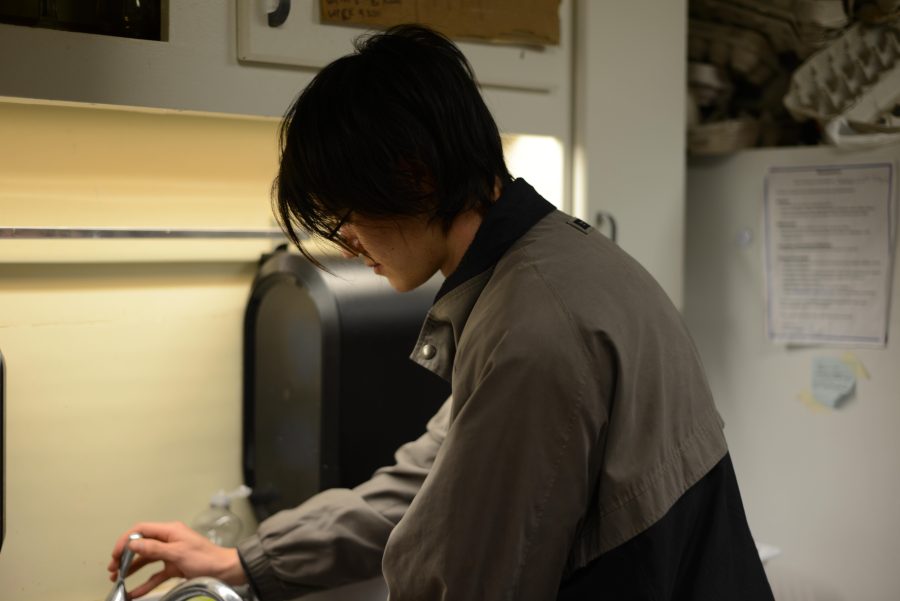On the evening of April 1 and into the morning of April 2, the water from taps, showers and toilets ran a muddy brown in Watson, Evans, Cassat, James, Myers and Cowling Gym. Students contacted their Resident Assistants, who informed the Facilities Department. By 8:23 a.m., April 2, Senior Accountant and Employee Housing Coordinator Denise Gillen sent out a campus-wide email assuring students that Facilities was aware of the situation. Mitch Miller, Maintenance Manager, was in charge of the fix, and on April 2, a permanent system replacement was completed.
According to the 2019 Drinking Water Report provided by Carleton, the college’s domestic water—which includes drinking water—is supplied by the school’s own well, located north of campus along Highway 19. This water, along with the water used to supply those who live within the Northfield city limits, comes from a groundwater source that draws from the Jordan aquifer.
Groundwater is water that comes from an underground aquifer, and it accounts for 75 percent of the drinking water in Minnesota. The other 25 percent is supplied by surface water, which comes from rivers, lakes, and streams, the report explains.
Carleton and the city of Northfield generally maintain separate water systems, but according to Miller, because Carleton cannot store enough water to form a full fire protection system, there are two points on campus where the Carleton pipes connect to the city pipes for emergencies.
One of these valves is located right outside Watson, one of the affected buildings. Miller said on the day the discoloration occurred, the water in the water tower dropped below a certain level, which automatically opened up the valve, letting city water into Carleton pipes.
“When you stir the water up in the pipes with a large flow, it stirs up some of the rust and starts moving it,” Miller said, explaining that this is what caused the discoloration.
“It was not hazardous, it was just iron in the water,” he said, emphasizing that there was no need for concern and that students should “just flush it until it’s clear.”
Rahul Kirkhope ’22 is the Resident Assistant on the third floor of Watson. He recalled receiving an email at 2:00 a.m. from a resident. “By the time I woke up that morning, an official response from Facilities went out so I felt as if the question was answered,” said Kirkhope.
“My personal feelings about the incident are negligible. This is not the first time something has gone wrong with the water supply in a residential dorm. If anything, the administration’s response to the issue was extremely timely and efficient,” Kirkhope said.
While some students were concerned, others were not. Lillian Berets ’23 experienced the discolored water when filling up her water bottle. She noticed that “the water was all brown, kind of orange and a little bit not clear,” but she was not disturbed by it.
“For a minute I thought it was a little gross. But then I thought, ‘this happens,’ and I just went about the day,” she continued.
This event was not isolated to Carleton’s campus. Justin Wagner, the Utilities Manager of Northfield, said, “There were a few spots that had a little bit of discoloration in the city. I don’t remember the exact number of calls we had but there were not many.”
He said the cause of this was likely the same as the cause for Carleton’s problem: the usage of city water on campus. Like Miller, Wagner explained that when a large volume of water goes through the pipes, it “pulls some of the scale of the pipes and iron and manganese off,” which can cause discoloration.
In the city, Wagner said water discoloration is actually pretty common, but more frequently in instances when a large volume of water is used, such as opening a fire hydrant.
In past years, the city of Northfield has experienced problems with water discoloration, but these instances have typically occurred in the fall, due to hydrant flushing. Hydrant flushing happens regularly in October and can affect the clarity of the water. According to Wagner, the city usually flushes hydrants once a year, and that has “provided sufficient flushing of the system.”
Hydrant flushing, as explained by Wagner, is when “watermains are routinely flushed to remove minerals as they accumulate in the distribution system and to check the operational integrity of the fire hydrants.”
In his 10 years working for Carleton, Miller said he’s never seen the water discolored for this particular reason, but again stressed that there was no danger. He said, “We are monitored by the state. If we had a hazardous situation, we would have to report it to them, but this was not considered that.”











